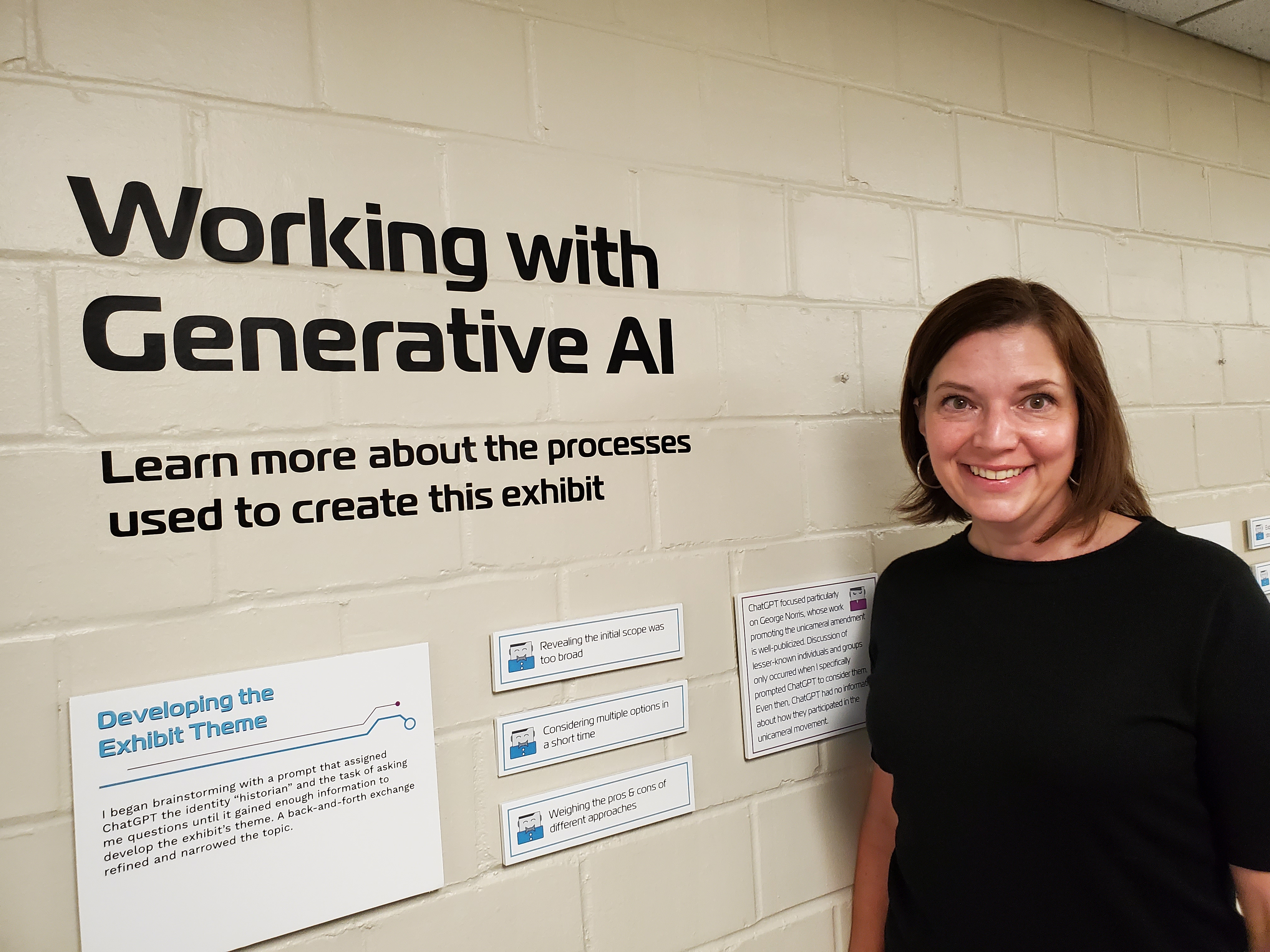
As outreach archivist, Traci Robison has curated or co-curated exhibits on Shakespeare, the history of Husker Women’s Athletics, and more using the collections of the Archives & Special Collections and her skills as researcher. For Fall 2024, Robison was inspired to test out a new tool – artificial intelligence – to curate an exhibit on the history of Nebraska’s unicameral legislature and the experience was fascinating.
She conceived of a nested exhibit, one portion created with ChatGPT and one where she outlined the process, performance, and output of using generative AI. Her goal was to have the exhibit serve as an example to be critiqued by visitors and as a catalyst for discussions on the issues around AI.
“I wanted to surface questions around using AI and evaluating its output,” explained Robison. “I think archivists and librarians have a role to play in helping users navigate these challenges.”
Robison chose the birth of Nebraska’s Unicameral as the exhibit’s subject because she was confident ChatGPT could pull some related information from its training data and it was a timely topic in an election year. Out of the multiple sessions she conducted with ChatGPT Robison encountered various levels of success and failure.
“As a first-time user, I was learning as I worked. One of the things I found most useful was having ChatGPT question me – refine my ideas, consider options I might not have thought of – and focus my efforts more quickly than I usually do,” Robison explained.
In other areas, the AI struggled or made blatant mistakes. It provided no citations for its information and suggested non-existent sources for further research. Verifying that those sources were not real wasted time. “Consulting with a librarian to find relevant sources is definitely a better approach,” Robison said.
Robison researched the unicameral using primary sources and publications. She fed facts from her research into ChatGPT to supplement the AI-created outline. Even then, ChatGPT altered one of the facts and moved it from the proponents’ column of a chart to the opponents’ column.
“I left it in the chart, showing the mistake in strikethrough text,” Robison said. “It’s a reminder to fact-check everything – even when you supply the facts.”
Robison conducted multiple ChatGPT sessions to plan the exhibit but generated the content as displayed in a “The Birth of Nebraska’s Unicameral,” in a final session. She shows all this process in the exhibit, and she prompts visitors to discuss the results.
“As soon as the exhibit was installed, visitors began sharing their thoughts and responding to the questions it poses,” Robison said. “I hope that as classes return this fall, more folks will visit the exhibit to add their own ideas and critiques.”
Visit Artificial Archivist: ChatGPT as Curator and its nested exhibit: The Birth of Nebraska’s Unicameral Legislature in the lower level of Love Library South and leave your comments or questions about AI’s performance.